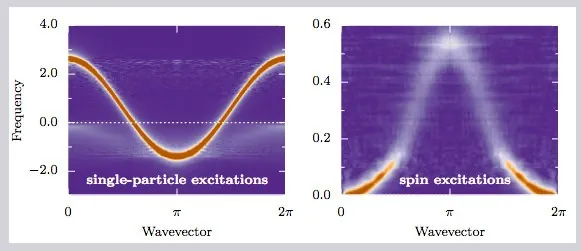
Revolutionizing Quantum Technology: Scientists Harness Atomic Motion
2025-05-28
Author: Emma
In a groundbreaking breakthrough, a group of innovative physicists from Caltech have unveiled a remarkable method to harness the natural motion of atoms for the storage and processing of quantum information.
Discoveries in Hyper-Entanglement
Published in the prestigious journal Science, their research marks the first-ever observation of "hyper-entanglement" in massive particles like neutral atoms, promising to unlock transformative possibilities for quantum computing and advanced measurement technologies.
The Magic of Optical Tweezers
Under the leadership of Caltech's own physics professor Manuel Endres, the team utilized cutting-edge devices known as optical tweezers—meticulously focused beams of laser light that can trap and manipulate individual atoms with remarkable precision. This technology allowed them to isolate and control the movements and internal states of alkaline-earth atoms, critical components for evolving quantum systems.
Turning a Nuisance into an Advantage
While scientists have traditionally viewed the minor vibrations of atoms caused by thermal motion as a hindrance, the Caltech researchers took a bold step by flipping the script. They embraced this atomic motion, ingeniously using it to encode quantum information and forge a highly correlated state among the atoms.
The Quantum Maxwell Demon and Atomic Cooling
Their innovative approach included a technique reminiscent of the famous "Maxwell demon," where the team measured atomic motions and actively corrected deviations. This method achieved a cooling effect that eclipsed even the most sophisticated laser cooling techniques, essential for the precise control they needed.
Quantum Superposition: A New Dimension of Motion
Thanks to this cooling, each atom began to oscillate like a tiny pendulum in a striking quantum twist—existing in a superposition of two distinct motions simultaneously. This means that each atom is, in essence, swinging in two directions at once, a phenomenon that defies classical physics.
Entanglement Across Distances
With this new level of control, the team successfully entangled pairs of atoms, linking their motions across distances of several micrometers. Notably, they achieved hyper-entanglement, where both the motions and internal electronic states of the atoms were intertwined—a dual layer of entanglement that significantly increases the quantum information capacity per atom.
A Bright Future for Quantum Machines
This advancement paves the way for future quantum machines to deliver enhanced performance while utilizing fewer resources, a crucial step toward scalable quantum computing and simulations.
Implications Beyond Computing
Moreover, the findings hold immense potential for high-precision measurements, including the creation of ultra-accurate atomic clocks. The techniques developed could serve as a foundation for simulating complex quantum systems, offering unprecedented insights into the fundamental workings of nature.









 Brasil (PT)
Brasil (PT)
 Canada (EN)
Canada (EN)
 Chile (ES)
Chile (ES)
 Česko (CS)
Česko (CS)
 대한민국 (KO)
대한민국 (KO)
 España (ES)
España (ES)
 France (FR)
France (FR)
 Hong Kong (EN)
Hong Kong (EN)
 Italia (IT)
Italia (IT)
 日本 (JA)
日本 (JA)
 Magyarország (HU)
Magyarország (HU)
 Norge (NO)
Norge (NO)
 Polska (PL)
Polska (PL)
 Schweiz (DE)
Schweiz (DE)
 Singapore (EN)
Singapore (EN)
 Sverige (SV)
Sverige (SV)
 Suomi (FI)
Suomi (FI)
 Türkiye (TR)
Türkiye (TR)
 الإمارات العربية المتحدة (AR)
الإمارات العربية المتحدة (AR)